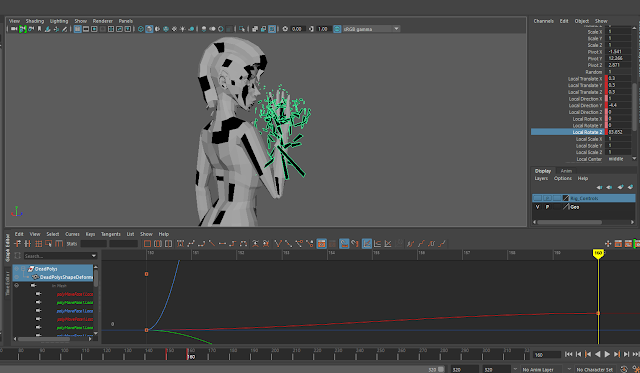After our final presentations on Friday I took on board the feedback from the lecturers and implemented it into a final version of Cure. I agreed with everything they said and listed off what needed to be fixed:
- The biggest issue was that the story wasn't coming across properly as the 'dying polygons' were only ever there in the first few shots and the character didn't seem to lose that many polygons.
- There were some camera shots that lingered for almost 10 seconds and they needed some variation.
- Some of the animation needed to be more obvious and expressive.
- There were errors in the recording from Unity, the eyes flickered and the lighting updates needed to be cut at the beginning of each camera change.
- The sound needed to be boasted as it didn't come across through a TV.
I first fixed the issues of the dying polygons by adding more black polygons to the character that progressively spread as the film went on until she got the cure. I kept these to the right side as that is what the audience sees the most of until the final scene when we see her from the left so I wanted her to have more colour on that side.
Secondly, to show more polygons falling from her hands I used the same technique of the transform tool as I had used for the tent. This created a stronger effect.
I added in a few additional cameras into Unity to help cut up some of the longer shots as well as adding more expression to my animations. Using a clean model and rig, I no longer had the issue of the eyes flickering when I exported to alembic and into Unity which solved that problem itself!
Finally in Premiere Pro I adjusted the gain for all sound tracks making sure there was a consistent volume across all channels.





Comments
Post a Comment